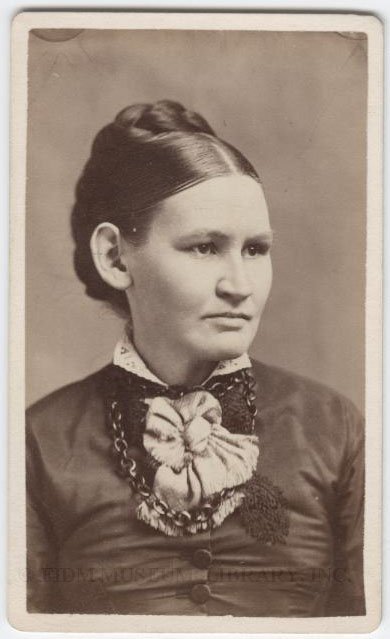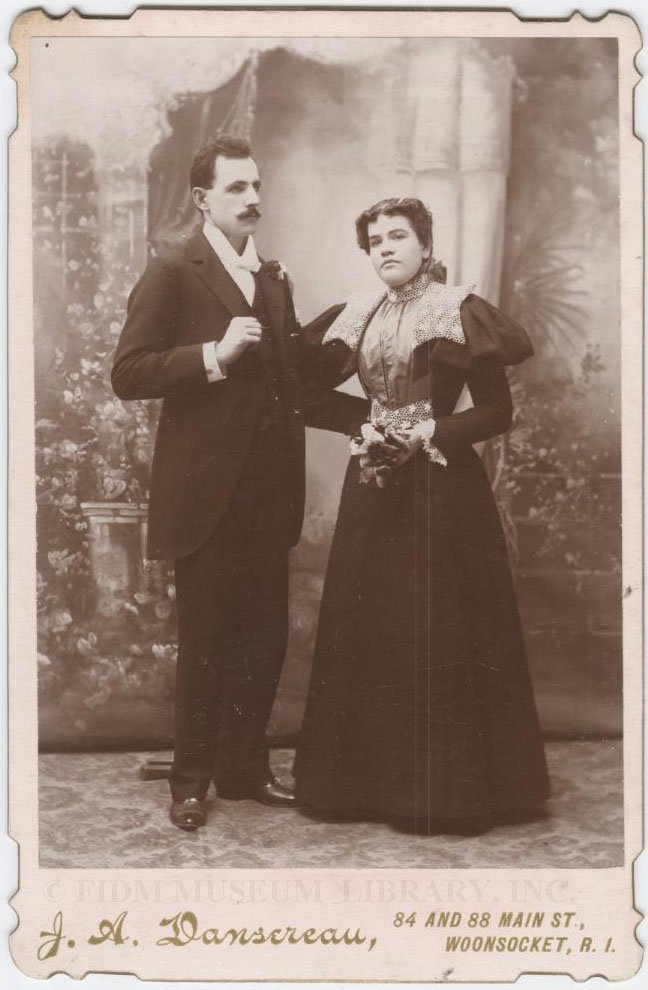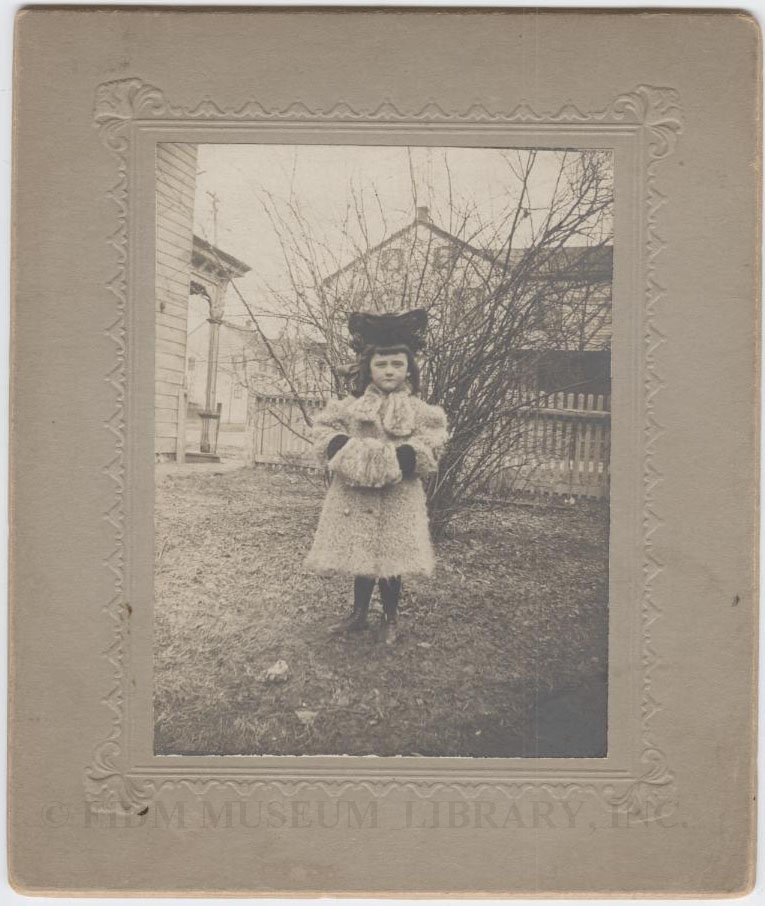Fashion history through photographs, part II
Part two of FIDM Museum Collections Manager Christina Johnson's examination of how photographs can be used to study fashion history.

Carte de visite c. 1875-77 Gift of Steven Porterfield 2009.897.103
Carte de visites were produced from 1854 through the 1880s. They are small paper photographs mounted on cardstock, about the size of a Victorian calling card -- 4” by 2 ½”. They utilize a process that creates a glass negative which could produce multiple paper prints. This carte dates to 1875-77. Very little of the sitter’s gown shows, therefore, the portrait has been dated through the woman’s hairstyle and jewelry. Her hair is oiled, parted at the center, and arranged in a wide braid--possibly a separate hairpiece. A small whitework collar, silk fringed bow, and necklace of black thermoplastic links ornament her dress, the bodice of which has been imperfectly fitted and pulls tightly across her bust.
 Cabinet Card c. 1896-97 Gift of Ken Weber 2009.924.8
Cabinet Card c. 1896-97 Gift of Ken Weber 2009.924.8
The next process is the cabinet card. Like the carte de visite, the cabinet card was a paper photographic portrait mounted on paper board. Most cabinet cards measure 4 ½” by 7”. They were popular from about 1870 to the turn of the 20th century and were generally imprinted with the photographer’s name and location. This cabinet card is from Rhode Island, as seen at the lower edge. A couple with interlinked arms stands against a painted backdrop for what is possibly their wedding portrait -- the man wears a corsage and the woman holds a bouquet. Many women were not married in white during the nineteenth century. Instead, they chose to wear a serviceable ensemble that could be used throughout their first years of marriage. A studio posing stand, used to help keep sitters steady during a multi-second exposure time, is discernible just behind the man’s feet.
 Snapshot c. 1900-1903 Gift of Ken Weber 2009.924.15
Snapshot c. 1900-1903 Gift of Ken Weber 2009.924.15
The snapshot was invented by George Eastman Kodak when he introduced rolled paper film in 1884. At that point, snapshot cameras were quite expensive -- costing $25.00. That price included film and development; once the photographer used the preloaded role of 100 negatives, the whole camera was sent back to the company for processing and re-loading. Kodak’s “Brownie” camera was first sold in 1900, and was priced at $1.00. These more affordable cameras could be purchased and processed at drugstores, making it the first viable photographic process for amateurs. 150,000 brownie cameras were sold in 1900. Snapshots show people in their own spaces such as homes and backyards, more casual than in photographic studios. Some early snapshots were mounted on decorative boards, like this portrait of a little girl in a backyard -- wearing what must be her new winter mohair coat and muff.
Further Reading: Severa, Joan. Dressed For the Photographer: Ordinary Americans and Fashion, 1840-1900. Kent, Ohio: Kent State UP, 1995. Severa, Joan. My Likeness Taken: Daguerreian Portraits in America. Kent, Ohio: Kent State UP, 2005. For more information on daguerreotypes: The Daguerreian Society